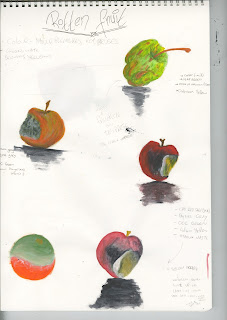VANITAS
- Skull: Death, this is a clear memento mori message or the transience of life, a universally recognized symbol of death.
- Watch or hourglass: time is limited and is passing, therefore, use it wisely. See a typical one-handle XVII century watch at the lower right of the photo.
- Books: Human knowledge and its temporary nature.
- Artist’s instruments e.g. Palette, brushes, easel: Indulgence in the arts, very few could afford to be painters let alone patronize the arts.
- Shell: they were normally exotic ones not commonly available in the Netherlands. They were a symbol of the vanity that comes with wealth, as these were exotic items at the time, only a very wealthy person would have one of those.
- Insects, decaying flowers: transience of life. They were inserted in paintings depicting expensive objects as a reminder that life is temporary and moral considerations deserved more attention than material things.
- Broken or tipped over glassware: transience of life or life is fleeting.
- Musical instruments: indulgence of the senses as a luxury. Sometimes they are present as artistic inspiration, as music would inspire artists.
- Silk or velvet tablecloths: vanity, as these were expensive things. Silk being the ultimate fabric material and purple the most expensive dye, hence the Roman emperors wore purple tunics.
- Oriental rugs or carpets: These were prohibitively expensive items, carpets were placed on tables to avoid stepping on them and causing decay in their colors or integrity. They were a symbol of wealth but also a sign of pride as they were items brought into the United Provinces throughtrade and commerce.
- Jewelry, clothes or mirrors: remember the temporary nature of beauty, wealth and wisdom. Earthly riches are temporary and therefore life should be carried out according to the modesty traditions that were in place at the time.
- Mirror: a clear symbol of the vanity that should be avoided.
- Jars: Stoneware or porcelain were used for water or oil, both substance sustain life at the time.
Once i had learnt some of the meaning to the objects in the Vinitas style of still life painting i have started to try construct my own with what i have seen.
Looking at the work of Pieter Claesz Who has done many a still life in the Vanitas format, I found he had the best examples of showing these objects in his compositions.
So i did some roughs in pencil to see if i could come up with a similar image using just a few of the objects from the lists.
By using the objects that the old master used when creating these images.
Fruits to show gluttony and exotic fruits enjoyed in life.
PIpes and coins to show the wealth of the subject
IM going to start drawing out the individual objects and scan them in to photoshop to see if by been able to have more freedom with position and size it could make for a interesting image.
Also agg some colour trying to focus on the monochrome style to see if this will add some gritty and gloom feeling to the image.
Also agg some colour trying to focus on the monochrome style to see if this will add some gritty and gloom feeling to the image.
THe objects that whee used in vanitas painting where all there because they have a meaning th that can be linked to the passing of time leading us to our one guarantee in life the dreaded death of one's self.
Rotten fruit showed that the passing of time is inevitable and that even the goodness of fruit turns bad, to rot and wither and dries up.








No comments:
Post a Comment